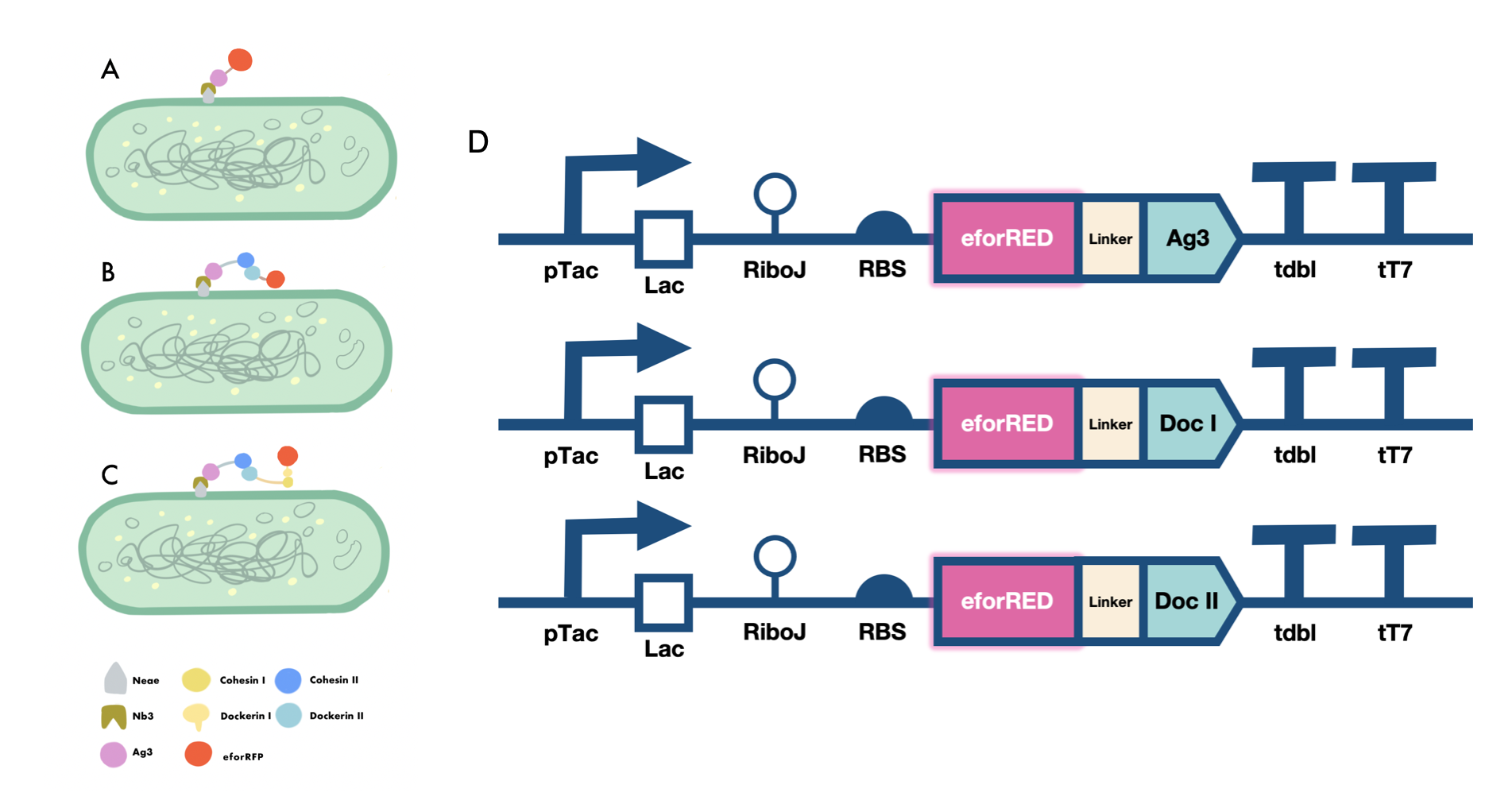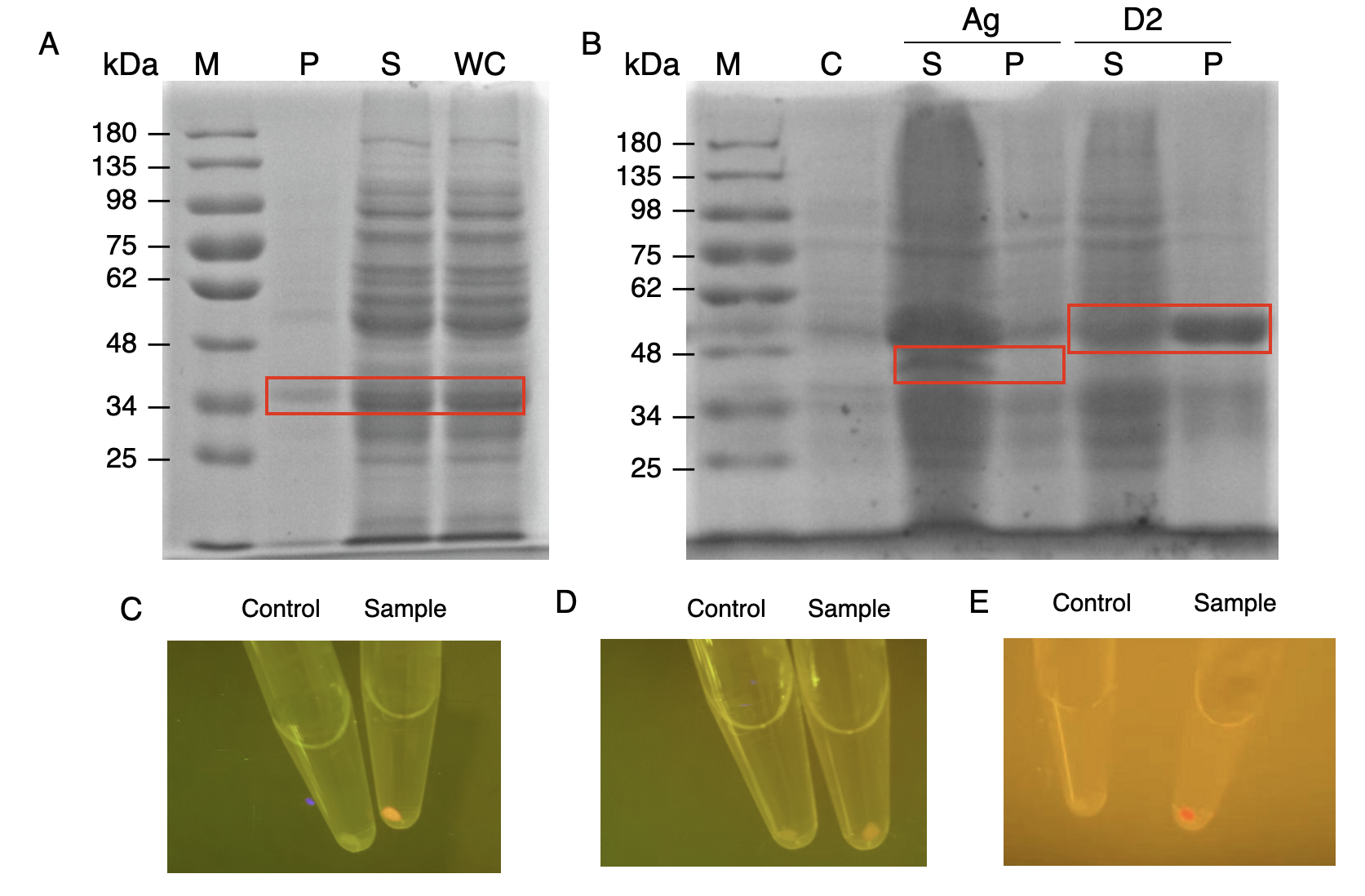Part:BBa_K4275029
eforRED-dockerin II
This composite part is consisted of a type ii dockerin and a eforRED chromoprotein[2] fused at the N terminal of the dockerin. The dockerin is a highly symmetrical and non-catalytic domain and it specifically binds with type ii cohesin on the scaffoldin by high-affinity and non-covalent interactions[1]. In cellulosome, the type two dockerins are usually fused on scaffoldins CipA thus enabling the assembly of scaffoldins OlpB with the CipA scaffoldins to ensure enzymatic synergies. The eforRED protein (originates from Echinopora forskaliana) fused at the N terminal of the dockerin is a reporter molecule, serving the purpose of testing whether the cohesin and the dockerin are successfully bind. By centrifugation, the successfully combined complex will display a red fluorescent.
Figure 1 The 3D structure of the protein predicted by Alphafold2.
Usage and Biology
Type ii dockerin is a module which anchors the scaffoldins to another scaffoldins or to the cell surface. It is originally found in anaerobic bacteria C.thermocellum. It requires calcium ions to be presented due to the the calcium-binding motif of the dockerin domain whose sequence resembles the EF-hand motif of calcium-binding proteins[1].
eforRED as A Reporter Protein
The nanobody-antigen interaction was verified by mixing intact E.coli cells displaying Neae-Nb3 with the supernatant of Ag3-eforRED (Fig. 2A). Red fluorescent characteristics were observed in the pellets after resuspending the centrifuged mixture, which is absent in the control group that only contains Neae-Nb3 (Fig. 3C).
After that, the type II cohesin-dockerin interaction was tested using the mixture of Neae-Nb3, OlpB-Ag3, and the type II dockerin fused with eforRED (Fig. 2B). A negative control lacking OlpB-Ag3 was set up for result comparison. Centrifugation was used to remove supernatant and the red fluorescence was only identified in pellets of the sample group, confirming the type II cohesin-dockerin interaction (Fig. 3D).
Finally, the association between type I cohesin and type I dockerin was validated using the mixture of Neae-Nb3, OlpB-Ag3, CipA1B2C, and DocI-eforRED (Fig. 2C), red fluorescence was detected in the resuspended mixture while it was not observed in the control group lacking the primary scaffold CipA1B2C (Fig. 3E), verifying the type I cohesin-dockerin interaction.


Sequence and Features
- 10COMPATIBLE WITH RFC[10]
- 12COMPATIBLE WITH RFC[12]
- 21COMPATIBLE WITH RFC[21]
- 23COMPATIBLE WITH RFC[23]
- 25INCOMPATIBLE WITH RFC[25]Illegal AgeI site found at 702
- 1000COMPATIBLE WITH RFC[1000]
References
1. Brás, Joana L.A., et al. “Escherichia Coli Expression, Purification, Crystallization, and Structure Determination of Bacterial Cohesin–Dockerin Complexes.” Cellulases, 2012, pp. 395–415, 10.1016/b978-0-12-415931-0.00021-5.
2. Part: "Bba K592012 - Parts.Igem.Org". Parts.Igem.Org, 2022, https://parts.igem.org/Part:BBa_K592012.
| None |

